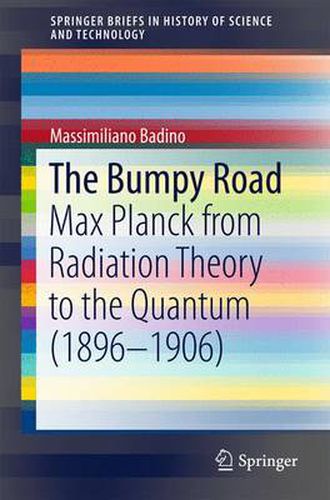Readings Newsletter
Become a Readings Member to make your shopping experience even easier.
Sign in or sign up for free!
You’re not far away from qualifying for FREE standard shipping within Australia
You’ve qualified for FREE standard shipping within Australia
The cart is loading…






This title is printed to order. This book may have been self-published. If so, we cannot guarantee the quality of the content. In the main most books will have gone through the editing process however some may not. We therefore suggest that you be aware of this before ordering this book. If in doubt check either the author or publisher’s details as we are unable to accept any returns unless they are faulty. Please contact us if you have any questions.
This book examines the different areas of knowledge, traditions, and conceptual resources that contributed to the building of Max Planck’s theory of radiation. It presents an insightful comparative analysis that not only sheds light upon a fundamental chapter in the history of modern physics, but also enlarges our understanding of how theoreticians work.
Coverage offers a deep investigation into the technical aspects behind the theory and extends in time the notion of quantum revolution. It also presents a full-fledged discussion of the combinatorial part of Planck’s theory and places emphasis on the epistemological role of mathematical practices. By painstakingly reconstructing both the electromagnetic and the combinatorial part of Planck’s black-body theory, the author shows how some apparently merely technical resources, such as the Fourier series, effectively contributed to shape the final form of Planck’s theory.
For decades, historians have debated the conditions of possibility of Max Planck’s discovery as a paradigmatic example of scientific revolution. In particular, the use of combinatorics, which eventually paved the way for the introduction of the quantum hypothesis, has remained a puzzle for experts. This book presents a fresh perspective on this important debate that will appeal to historians and philosophers of science.
$9.00 standard shipping within Australia
FREE standard shipping within Australia for orders over $100.00
Express & International shipping calculated at checkout
This title is printed to order. This book may have been self-published. If so, we cannot guarantee the quality of the content. In the main most books will have gone through the editing process however some may not. We therefore suggest that you be aware of this before ordering this book. If in doubt check either the author or publisher’s details as we are unable to accept any returns unless they are faulty. Please contact us if you have any questions.
This book examines the different areas of knowledge, traditions, and conceptual resources that contributed to the building of Max Planck’s theory of radiation. It presents an insightful comparative analysis that not only sheds light upon a fundamental chapter in the history of modern physics, but also enlarges our understanding of how theoreticians work.
Coverage offers a deep investigation into the technical aspects behind the theory and extends in time the notion of quantum revolution. It also presents a full-fledged discussion of the combinatorial part of Planck’s theory and places emphasis on the epistemological role of mathematical practices. By painstakingly reconstructing both the electromagnetic and the combinatorial part of Planck’s black-body theory, the author shows how some apparently merely technical resources, such as the Fourier series, effectively contributed to shape the final form of Planck’s theory.
For decades, historians have debated the conditions of possibility of Max Planck’s discovery as a paradigmatic example of scientific revolution. In particular, the use of combinatorics, which eventually paved the way for the introduction of the quantum hypothesis, has remained a puzzle for experts. This book presents a fresh perspective on this important debate that will appeal to historians and philosophers of science.